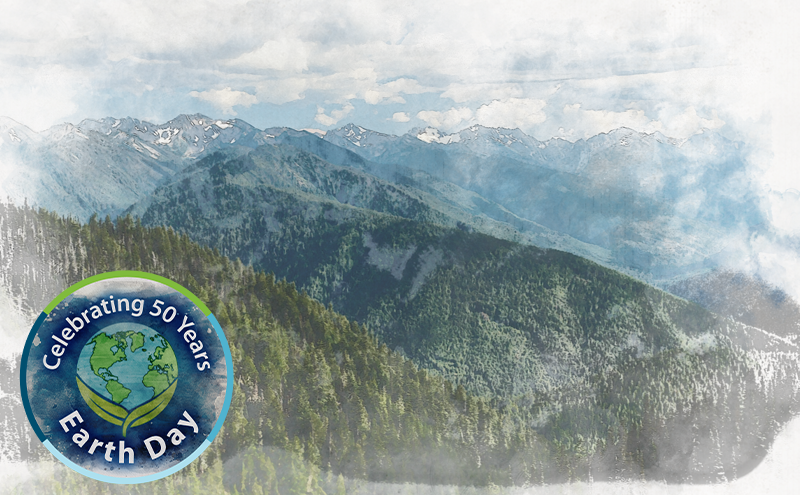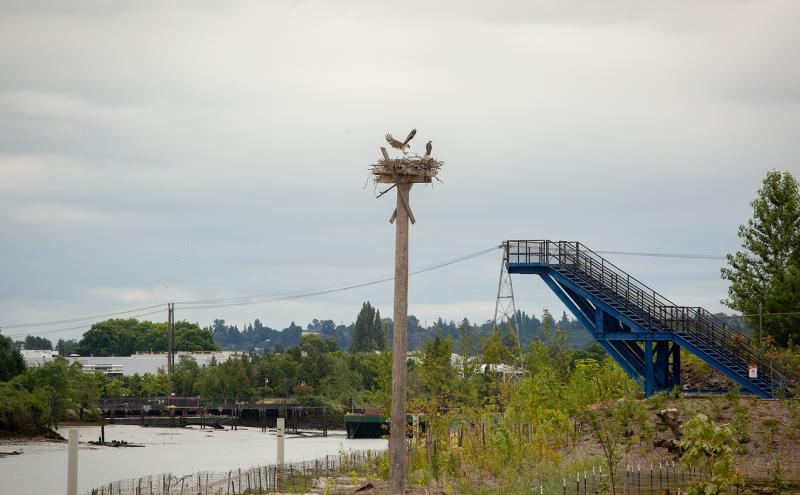
The beautiful natural environment is one of the most significant reasons we love living in the Pacific Northwest. And it’s everyone’s responsibility to protect it every day, not just on Earth Day. The Port recognizes the importance of balancing economic growth with sustainability. Our goal is to be the greenest seaport and airport in North America while providing essential services to the region. And here are the steps we are taking to get there.
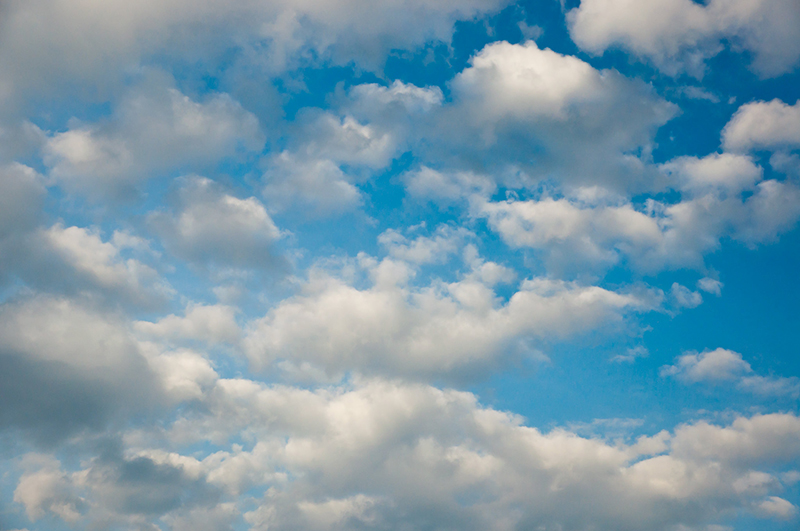
Photo credit: "Bright clouds over blue sky" by Horia Varlan is licensed under CC BY 2.0.
The air
There’s something about the air here. It’s one of the things I love the most after growing up in an inland and stagnant swamp where some brave soul thought “hey let’s build a city here.” The air here is special. Fresh. You step outside and depending upon the day and the tides, get a whiff of brine, evergreen, seaweed, and minerals.
Launching the world’s first green corridor for cruise ships
In 2022 the Port and 13 partners — including government, NGOs, and cruise industry participants — launched a collaborative effort to start the world’s first green corridor for cruise. A feasibility study of a maritime green corridor aimed at accelerating the deployment of zero greenhouse gas (GHG) emission ships and operations between Alaska, British Columbia, and Washington is underway.
Using renewable natural gas (RNG) to heat SEA Airport
Seattle-Tacoma International Airport (SEA) is the first airport in the country to use thermal renewable natural gas (RNG), a low-carbon natural gas alternative produced from landfill waste, to heat the airport terminal and power the bus fleet. The switch reduced the Port’s carbon emissions by 50 percent in 2021, ten years ahead of the target date. Over the next 10 years, this will reduce the emissions equivalent of:
- Heating 40,000 Seattle homes
- Taking 24,000 passenger vehicles off the road
Reducing emissions from shipping and port operations
The Northwest Ports Clean Air Strategy is a collaborative effort between the Ports of Seattle, Tacoma, the Northwest Seaport Alliance, and Vancouver Fraser Port Authority to reduce air and greenhouse gas (GHG) emissions from shipping and port operations. Adopted in 2008, it was the first international strategy of its kind in the Port community. In 2020, a renewed vision will phase out emissions from seaport-related activities by 2050, supporting cleaner air for our local communities, and fulfilling our shared responsibility to help limit global temperature rise to 1.5°C.
Expanding the shore power infrastructure to eliminate maritime emissions at berth
Using shore power is a key strategy to eliminate climate and air emissions from cruise ships, commercial ships, and workboats while at berth.
Shore power has been available to cruise ships at the Smith Cove cruise Terminal since 2004, and a project is underway to install a shore power connection at the Pier 66 cruise berth by 2024. A shore power connection allows cruise ships to plug into clean, electrical power on the dock and turn off diesel engines while at berth. As a result, each ship that plugs in can reduce diesel emissions by 80 percent and CO2 emissions by 66 percent on average. The goal is to have 100 percent of home port cruise ships in Seattle equipped with shore power capability and connect on every call by 2030 or sooner.
Commercial cargo ships and workboats like tugboats are also prioritizing sustainability.
Terminal 5 is the first international container terminal in the Northwest Seaport Alliance (NWSA) gateway with shore power capability. On April 10, 2023 the MSC Brunella was the first commercial vessel to plug into the new Terminal 5 shore power infrastructure and use clean energy from the City of Seattle’s electrical grid to power the vessel while at berth.
NWSA is working on adding shore power capabilities to its newly modernized Pier 3 and Pier 4 facilities in Tacoma. And the TOTE Terminal in Tacoma (Operated by TOTE Maritime) has been equipped with shore power since 2010.
Leading the transition to Sustainable Aviation Fuels (SAF)
The Port of Seattle has been advocating the use of Sustainable Aviation Fuels (SAF) since 2008. The Port was the first United States airport operator to set a specific timetable and goals for transitioning all airlines at SEA to commercially competitive sustainable aviation fuels. The goal is to power every flight fueled at SEA with at least a 10% blend of sustainable aviation fuel (SAF) by 2028.
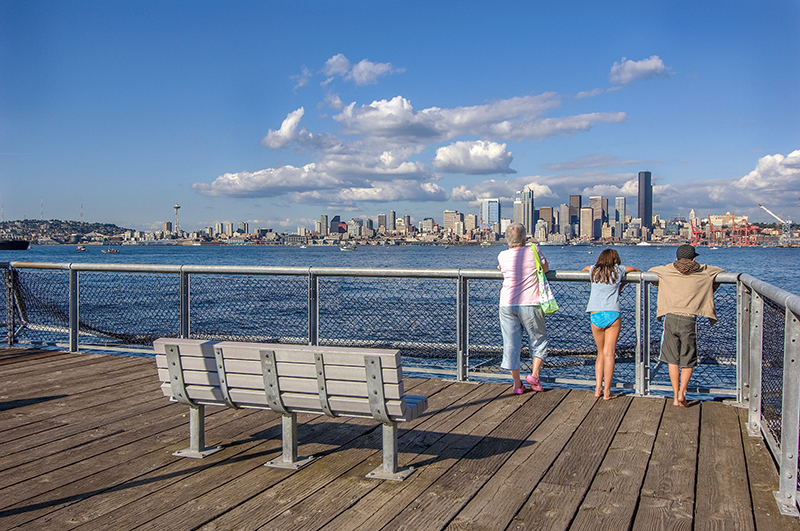
The water
Water water everywhere — another beautiful benefit of living here. Our waterways provide sparkling views, recreation, transport of goods, and an important connection to the rest of the world.
And don’t forget cruises to Alaska, one of the most significant contributors to the economy of our region. The Port and the cruise industry have put safeguards in place to help protect the maritime environment:
- Since 2004 the Port has partnered with the Washington State Dept. of Ecology and the cruise industry on a voluntary agreement to curb wastewater discharges from large cruise ships into state waters
- The Port imposes strict stormwater management practices for cruise vessel operations while at berth
- Starting in 2020, the Port prohibited cruise ships at berth from discharging exhaust gas cleaning system washwater into Puget Sound. In 2021, all ships calling in Seattle voluntarily agreed to pause all discharges until findings from a third-party research study can show that wash water discharges do not impact Puget Sound water
Filtering the water naturally
The Port’s Blue Carbon project is testing techniques to restore and improve critical aquatic habitat in urban bays like Elliott Bay. Native oysters and aquatic plants like bull kelp and eelgrass were planted to produce about 23 acres of “blue carbon” infrastructure. The project is a good example of restoration aquaculture and its goal is to trap carbon in the environment, reduce ocean acidification, and improve water quality by enhancing natural processes.
Quieting the Sound to protect orcas
Underwater noise impacts the killer whale’s ability to hunt, communicate, navigate, and avoid danger. That noise in Puget Sound can come from a variety of sources, including (but not limited to) small and large recreational boats and all sizes of commercial vessels. The Port of Seattle and many partners developed the Quiet Sound program reduce impacts to orcas by sharing whale sightings with the pilots of large vessels, so they can take slow down or move away from orcas. This will reduce their stress levels and help them function and find food.
Filtering stormwater at facilities
The Port has installed a system to filter stormwater runoff before it’s released back into the Sound
Operating Salmon-Safe facilities
Salmon-Safe, an independent third-party organization, conducts assessments and certifies low-impact land and water management in urban areas. Five Port maritime parks and 10 public shoreline access sites that cover more than 44 acres have been certified Salmon-Safe. The conditions required for certification enhance the ecological environment and improve salmon habitat.
SEA Airport is certified Salmon-Safe because stormwater and habitat management programs protect local streams, Puget Sound, and salmon populations. The airport is the largest Washington urban site to be reviewed for Salmon-Safe certification and was the first U.S. major transportation facility to receive the award.
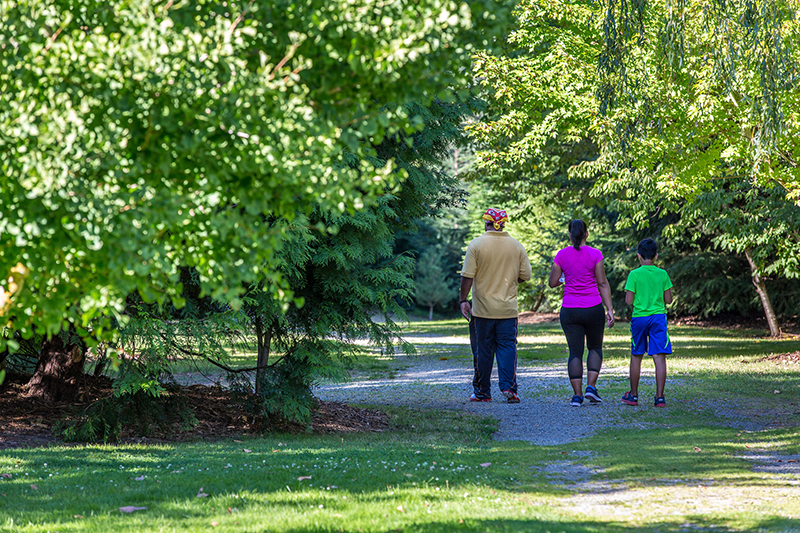
The land
It’s a priority for the Port to provide essential services to the people of the region and protect this beautiful and fertile ecosystem and all inhabitants, including people, animals, and plants.
Building sustainable shorelines
The Port has enhanced habitat along its 15.4 miles of shoreline by adding riparian vegetation along the shoreline to previously armored riverbanks (like seawalls and other structures) in Elliott Bay and the Duwamish River, enhancing bull kelp forests and eelgrass beds to sequester carbon, and constructing floating wetlands in areas where it’s difficult to restore the natural habitat.
Restoring habitat in an industrial Superfund site
In 2022, the Duwamish River People’s Park (DRPP) opened to the public. The Port remediated a former Superfund site to create the largest habitat restoration project in a generation with 14 acres of critical fish and wildlife habitat and public shoreline access. This project contributes to salmon recovery in the region, which supports the endangered Southern Resident orca population.
Organic gardening in public parks
It’s healthy to walk in the park, sit in the grass, and have a picnic. Did you know that the Port has five parks and 10 public shoreline access sites? Best of all, every park is maintained with a 100% organic and non-toxic approach to landscaping. So it’s good for you and for the earth.
Operating and building green facilities
The renovation of the 1970s North Satellite rolled out green features like harvesting rainwater to flush toilets, using responsible lumber, installing efficient lighting, and heating the facility with renewable natural gas (RNG). Many existing Port facilities, like the Pier 69 headquarters have been retrofitted with solar panels.
Keeping waste out of the landfill
SEA Airport keeps recoverable materials out of landfills; for example, 76% of construction waste for the new North Satellite was recycled and did not end up in a landfill. And travelers like you helped SEA Airport divert the equivalent of 97 solid waste trucks of compost and nine Boeing 747s out of the landfill. Go you!
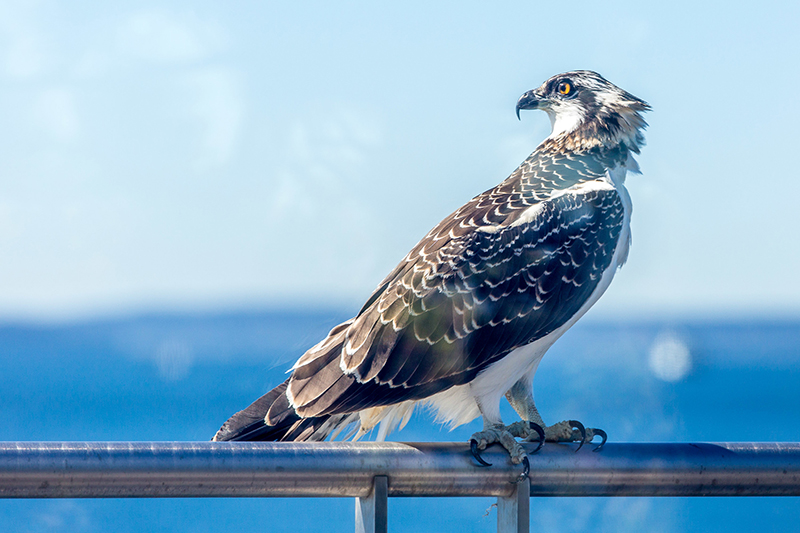
Serving the birds and the bees ... and everyone else
The mission of the Port is to serve and protect all species who call our incredible region home, including humans. The Port’s goal is to restore 40 acres of habitat by 2050, supporting a range of fish and wildlife species while contributing to environmental and conservation objectives.
Hosting finned and feathered friends on Port properties
From ospreys to barn owls, cutthroat trout, and blue herons, Port properties are home to a wide range of Northwest residents.
Building pollinator habitats
Did you know that colonies of honeybees have been thriving right under the jet path at SEA Airport since 2013? The Port and partner Common Acre turned unused green spaces into a native pollinator habitat — and in the process, produced a breed of bees better suited for survival in the future.
Preserving habitat for our furry and feathered friends
Since 2005, the Port has successfully implemented projects that improve ecological processes and functions critical to fish and wildlife:
- Managing the largest habitat restoration project in a generation at the Duwamish River People’s Park
- Creating or restoring 177 acres of wetlands and buffers near SEA Airport, including planting approximately 350,000 native trees and shrubs
- Enhancing two miles of salmon habitat in Miller and Des Moines Creeks and created 69 acre-feet of floodplain storage on the Green River
- Restoring more than 35 acres of estuarine and marine habitat and has planted more than 45,000 native trees and shrubs along the Duwamish Waterway and Puget Sound.
Keeping eyes and ears out for orcas
The Port is focused on improving salmon habitat (the primary diet for orcas) at Port marine parks and transportation facilities, decreasing underwater noise, and keeping marine traffic away from the endangered mammals.
Promoting environmental justice
And last but not least, people. A central part of the Port’s environmental work are the people who experience social and environmental disparities in our region. Hear from community groups about what environmental justice means to them and how they see it reflected in their work with the Port.
Promoting access to green jobs
The Port provides training and information, and access to green jobs that focus on environmental sustainability and solving environmental problems.

